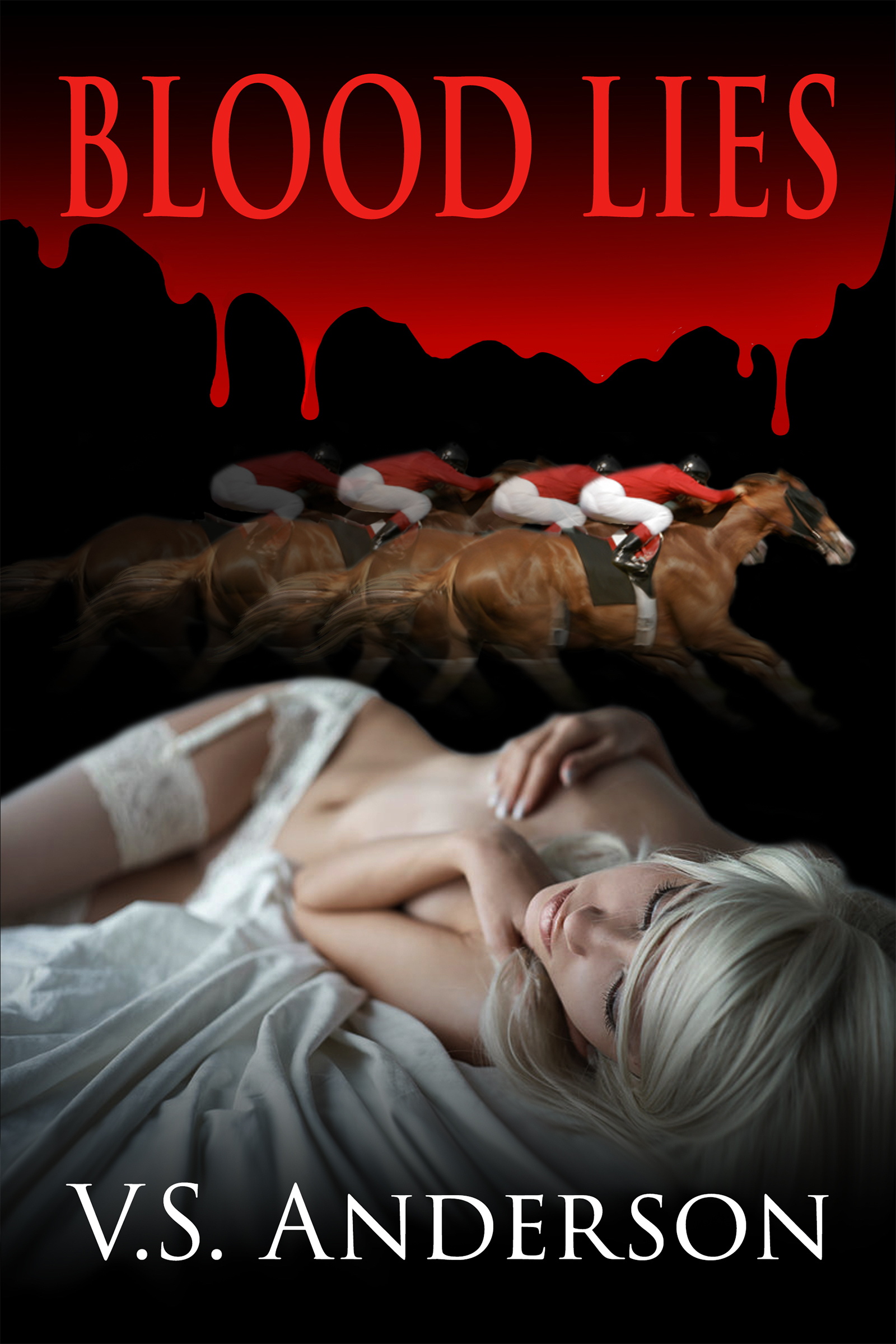 This post from Bookends Literary about the preferred (or maybe acceptable) word counts for different genres justifies my efforts to cut 6,000-7,000 words from my latest finished manuscripts. Since word count is often the first thing an agent or editor sees, I was happy to be able to claim something more appropriate than 107,000 words.
This post from Bookends Literary about the preferred (or maybe acceptable) word counts for different genres justifies my efforts to cut 6,000-7,000 words from my latest finished manuscripts. Since word count is often the first thing an agent or editor sees, I was happy to be able to claim something more appropriate than 107,000 words. 
Category Archives: genres for writers
Useful Info on Word Counts
How to add categories to your book on Amazon
Wow! I’ve been waiting for this information for ages. Join me in trying it, and let me know how it works for you!
Have you ever noticed that some books seem to be in lots of Amazon categories, and not just the two KDP allows you to choose when you publish your book?
Did you know you can add your book to more categories simply by contacting KDP support? You can have it in up to 10 categories, making it much more likely people will come across it when they search their Amazon site.
But why would I want my book in more categories?
Put simply, the more categories your book shows up in, the more people will see your book on Amazon.
Your book will show up in every step of the category pathway, for example, if one category path for your book is:
Kindle Store > Kindle eBooks>Science Fiction and Fantasy>Fantasy>Action & Adventure
your book will show up in each of the categories mentioned. Ideally, you want your book to…
View original post 635 more words
The Last Taboo in Y.A.?

150 year old open Bible with copyspace
I’m not a Young Adult author, but I found this piece from the New York Times intriguing. What do you think? Is “religion” as a central topic actually taboo (outside of the Christian publishing world, I guess)? Have you read or written mainstream Y.A. books that seem to address religion in the sense that the author seems to mean—and I’m not sure I understand exactly what she means.
Again, what do you think?
Filed under genres for writers, writing novels
Story Questions and “Plights”: Which Did You Leave Out?
 In my own writing and in my various writing groups, I’ve often focused on the need for a “story question.” Basically, if you don’t have a story question, you don’t have a story. You may have a diary, or a set of episodes, or a journal, but you don’t have a story.
In my own writing and in my various writing groups, I’ve often focused on the need for a “story question.” Basically, if you don’t have a story question, you don’t have a story. You may have a diary, or a set of episodes, or a journal, but you don’t have a story.
I discovered, though, that I was conflating “story question” with a related term, “plight.” I’ve twice posted—my own thoughts and those pilfered from other bloggers—about this mystery word, “plight.”
 “Plight” is what Donald Maass calls “the story beneath the surface.” An important difference between the two: You must have a story question to have a story. A plight is that extra something that elevates your story out of the realm of the mundane.
“Plight” is what Donald Maass calls “the story beneath the surface.” An important difference between the two: You must have a story question to have a story. A plight is that extra something that elevates your story out of the realm of the mundane.
Basics first, then: what is a story question?
The story question is generally the immediate and concrete problem or goal or issue demanding resolution. Will they escape the marauding hordes? Will they escape the flood? Will the detective find the murderer? Will the evil bully get his or her comeuppance?
A story question does not have to be this simple or easily solvable, but it must be there. Will she stay in the unsatisfying job or leave it? Will he reach his goal of becoming a great rap star? This is where the classic “rising action>crisis>climax>denouement” structure comes into play. The plot rises through all the character’s efforts with obstacles at every turn, to finally reach an answer: “yes or no.”

In a multistory serial, like, for example, Lord of the Rings (a great source of examples), each of the books is built around a story question: will the troop survive the obstacles posed by the various segments of their journey? Each book ends with a “yes” (for most), and each of the first two sets up the question to drive the next.
Even the most supposedly literary of novels/stories (I suppose with a few really outlying exceptions, but I can’t name any offhand), poses this type of “will they or won’t they” question. The “what will happen to them next?” is the page-turning element.
A story can function quite well on this simple principle. If readers are interested enough in the will-they-or-won’t-they, they’ll keep reading. And it doesn’t take a lot of “literary skill,” whatever that is, to build a story like this. All you need is someone about to fall off a cliff or a ravenous lion leaping out of the brush. 
Of course, even with a strong story question, pace and the empathy of characters can affect whether readers keep reading; for my part, I’ve now abandoned two John Grisham novels and won’t try a third because they were sooooo darn slow and didn’t offer me particularly interesting or engaging characters to fill in the slow spots. But most of us have favorite stories based simply on a “what will happen next?” or “what is the answer to the puzzle?” question. (See. e.g., Agatha Christie’s enduring popularity.)
So what is this other thing, “plight”?

Plight comes into play when the entire “what-will-happen” plot asks a second-level question. In my view, such plots almost always ask of the character(s), “Who am I?” Or more precisely, what kind of person do I want to be? What kind of person can I become—or fail to become?
My ideal novel has both these elements: a “will-they-overcome-the obstacles?” story question, and a plight question: “If they do (or don’t), so what?” A story that engages on both levels uses the plot question, the simpler one, to confront the main character with the larger one. Here you are in this demanding concrete situation. How you respond will tell you (and us) something about who you are.
Let’s look again at Lord of the Rings, in which the story question repeatedly puts the characters in a position where they must answer a larger question: whether or not they can resist the temptations offered by the various detours they can choose—detours involving character and heart. For Frodo in particular, the story events ask, “Are you Gollum? Will you give in like Gollum did?” This is the characters’ plight, their struggles to see where they stand in relation to these larger questions of identity and choice, which loom over the whole trilogy and bind it together. It’s not just a story of kids in the woods who have to escape the latest tiger. It’s about a tiger who asks, “Are you ready to show me who you are?”
 I’d argue that most stories, maybe especially those written for younger audiences, work to create such a story-behind-the-story: the
I’d argue that most stories, maybe especially those written for younger audiences, work to create such a story-behind-the-story: the
response to the tiger defines character and teaches how to confront fear. That all sounds so simple and self-evident, but of course it can be monstrously hard to achieve.
But I’ve begun to think more and more in terms of these issues when thinking about future books. As a pantser (really don’t like that word, but it does capture the mindset), I often find that the plight takes shape slowly. I’m thinking about a new book in which thinking through the plight before beginning to write seems to be helping. As I work out the immediate problem my developing character must solve, I also find myself thinking, “Okay, he solves that problem, but so what? How will his success change him? What does it matter to his confrontations with the world he has to negotiate every day?”
An important difference between story question and plight is that plight questions can remain open-ended whereas story questions cannot. People can reach turning points in their understanding of who they are, but still have more work to do. Not all tests are as definitive as Frodo’s. Not everybody just retires to a nice hobbit life.

But that’s one thing that makes a character memorable: the sense that they have a life after the book, they’re part of an unfinished journey where we might meet them again—maybe, in fact, not in a book.
So my do-as-I-say-and-I-hope-as-I-do rule: Look first to see if you have a story question that plots the sequence of events in the rising-action-crisis-denouement structure. If not, no story. But then step back and ask, “Once that question is answered, so what?”
That’s where you might discover the element that makes all the difference, your character(s)’s plight.

Do you have favorite books in which the “yes/no” story question asks characters to confront a larger plight?
A Lesson in First Pages!

A story hook is like those headlights coming at you. What lies ahead?
I often get good posts from Writer Unboxed, and today’s example is a recurring feature of the site called “Flog a Pro.” Monthly contributor Ray Rhamey invites readers to vote the first page of a current bestseller up or down: would you turn the page?
I’m sharing the most recent candidate because it speaks with particular eloquence to an issue I’ve been encountering in the writing groups I haunt. Although I understand the reasons a few commenters voted no (e.g., snarky narrator, too much alliteration), I’d vote “yes” on this sample for one simple reason: it has a hook.
Wait! Doesn’t everybody know that the first page, or at least the first chapter, of a novel has to have a hook?
Apparently not.
Evidence that not everyone understands this basic principle of story-telling comes not just from recent writing-group conversations but also from a set of contest entries I recently judged. Novel after novel opened with “introductions” to plain-vanilla characters going about their daily business or mundane scene-setting, or, all too often, gobs of backstory about people I have no reason to care about.
A scintillating voice or a rapier sense of humor can carry me for a few such pages, but even then, by the end of the first chapter, I have to have someone to worry about, something really perplexing to wonder over, some hint of a serious conflict that will drive the book. Those are “hooks.”
When I ask, “But where is the story going? What is this character’s problem, goal, frustration?”, and of course, the generic but important, “Why should I care?”, the (often indignant) response will be
“Oh, that will come in Chapter Two.”
or
“The reader will see that develop over the course of the book.”
Um, the reader won’t see anything develop over the course of the book because she won’t read it. She won’t get to Chapter Two.

A hook points to the door in the wall. and says, “Come through!”
From occasional comments I’ve received, I think it’s possible that this defense arises because the writers in question are producing LITERATURE. People who read LITERATURE don’t need bombs going off on page one. They will patiently wait for a story to develop. They’ll slog through long, tedious details because they know that only simpletons require things to actually happen. Endless observations of people tying their shoelaces—portraying the cosmic meaning in such minutiae—that’s what LITERATURE is all about.
Excuse me. I read LITERATURE, too. And the LITERARY writers who get read know that story isn’t necessarily about bombs going off. In fact, it’s usually not the bombs that matter.It’s what they do to the people they blow up.
Story is built on heart-wracking conflict, on blistering emotion, on goals set and surrendered and recovered, on needs. STORY transcends genre.
And story begins on page one.
Against Outlines
Do you outline your novels? Why or why not?

Since my title is “Against Outlines,” you may suspect I’m going to argue against them.
Maybe, though, I’m not vehemently against outlines for writing novels.
The outlines you need!
In my brief career as a romance novelist, outlines were essential.
After all, these books were short, about 55,000 words, and I had to produce them in a matter of months. Writing one had to be like running a mini-marathon.

You were given a route and a clear finish line, and you had to run the same route as everybody else. You could throw in a leap or a flourish here and there—in fact, you were encouraged to, as long as you didn’t stumble off course or onto the sidewalk. No characters allowed to stop and drift into quirky shops or down unmarked alleys. Eyes on the prize!
Lest romance writers rightly take offense, let me be clear. Setting off on and finishing this course is no snap.

Planning at this level takes enormous discipline. Directing each scene so that each actor arrives at the mark for the scene to follow requires a well-honed sense of character motive and of how dialogue and action can deliver on that motive. And those flourishes: as I learned, to carve out a lane for yourself in the genre with all those thousands of others huffing along beside you, to be you without veering off course: that takes a brand of genius. Believe me, I was there. I know.
Outlines make such a demanding fictional endeavor doable. Each scene can be carefully slotted into the overall course. Too many talky scenes in a row? The outline will flog you back on pace. Three-quarters there? Do you have enough action to fill those last pages? The outline knows.
And of course, there’s that one thing we all need that outlines amply provide: a story arc.  Something’s going to change before the end of the story. You can’t write your final outline entry without knowing what that something is.
Something’s going to change before the end of the story. You can’t write your final outline entry without knowing what that something is.
But. . .
“No surprise for the writer, no surprise for the reader.”
That’s what a dear late colleague of mine used to say. That “surprise for the writer” is what an outline trades away.
Writing without an outline is more like setting out on a road trip than a marathon. 
You do have a destination. You can see it, a glow on the horizon. But you’re not a hundred percent sure yet what’s giving off that glow.
So off you go. Maybe you have a map, but it offers you many forks, and you can’t even tell which one is shortest, let alone which one you’ll most enjoy. Along each fork you spot little side trips, where you park for a bit and wander to see what’s there. You find your characters in those quirky shops, down those murky alleys, picking up memories, fears, loves, trying them out like costumes to see what new selves they reveal.
You didn’t know your character loves French movies even though he doesn’t understand any French, or that she loves cats even though they make her sneeze. Or that she fell out of a tree and nearly died when she was ten, did you? Oh! That explains her anger at the father who didn’t catch her; now you discover her struggles with trust.
Without an outline, you don’t tell characters what to do. You follow them and discover what they do.
It’s not like you tag along blindly. If they get too wild, you may abandon them, leave them to their own stories . . . though you may come back one day just to see where they ended up.
Without an outline, there’s a sense in which the story writes itself.
 Dangerous? Oh, my lord, yes. It takes much longer. It tempts complication, which can be a storyteller’s bane.
Dangerous? Oh, my lord, yes. It takes much longer. It tempts complication, which can be a storyteller’s bane.
But it can save you grief as well. My one great, sad lesson from my Failed Novel was that once you set your thinly known characters loose in the world, talking to each other and finding unexpected doors to open, they create themselves—excuse the cliché: they take on a life of their own. And once that starts to happen, you must listen. The marathon route says turn right here; they say, “No, we don’t like that direction.”
Boss characters you’ve found, not made, and they’ll punish you.
So maybe we need a middle ground. A road trip into delight and surprise for the writer-on-deadline who must get to that glow this week, not next year?

What strategies do you use to keep your novel on track without giving up the chance for surprise?
7 Rookie Writing Mistakes (and 7 Ways to Improve)
The “7 Rookie Mistakes” from Phoebe Quinn over at A Writer’s Path ring true. For example, I agree we tend to recycle clichéd characters from other things we’ve read or TV we’ve seen. It’s because we do this that literature in all its forms has such a profound effect on our values. We think “heroes” MUST behave like the hero in a popular book or that people who behave like the villain we just saw on Netflix are also villainous. It’s tough in writing to catch yourself scribbling in these “types.”
What do you think of Quinn’s fixes? I’m still a pantser, and I do pay the price—but I want to be surprised by my own writing, and outlines take that surprise away.
A Perennial Question: What is Literary Fiction?
Check out this discussion about the definition of literary fiction and add your opinion. While you’re at it, here’s literary agent Donald Maass’s answer. I like it. What do you think?
Fantasy vs. Magical Realism
Here’s a useful article on a meaningful distinction. I’ve started pitching my work in progress, The Drowned Man, as magical realism. It certainly isn’t fantasy. Yet I’m not so sure it meets this definition either. What’s your definition of magical realism? Share your favorite examples!








